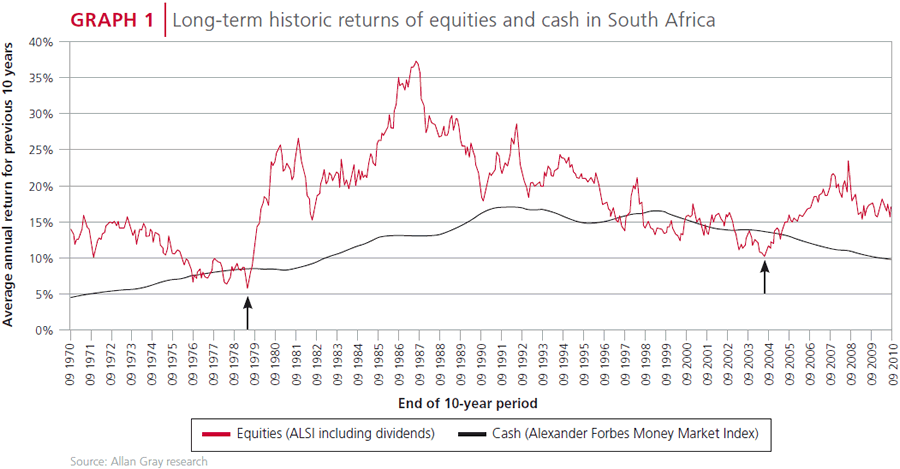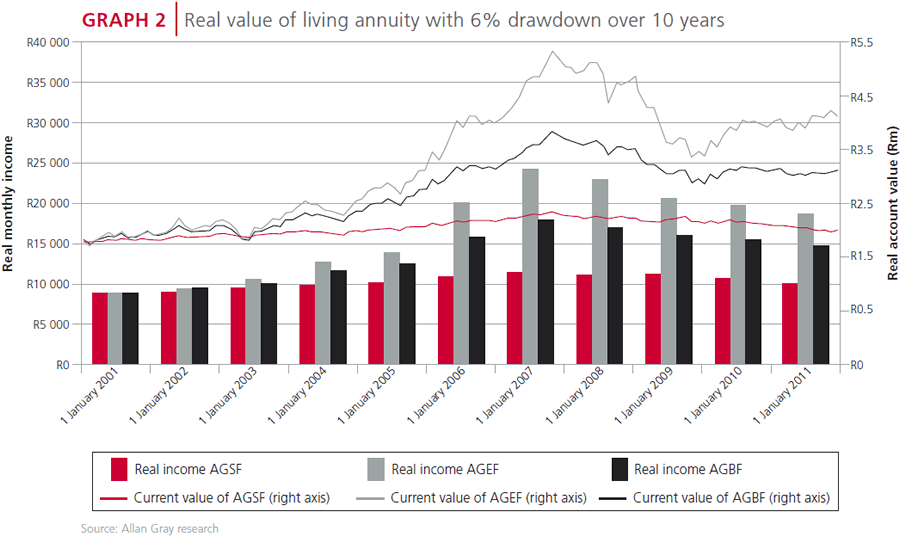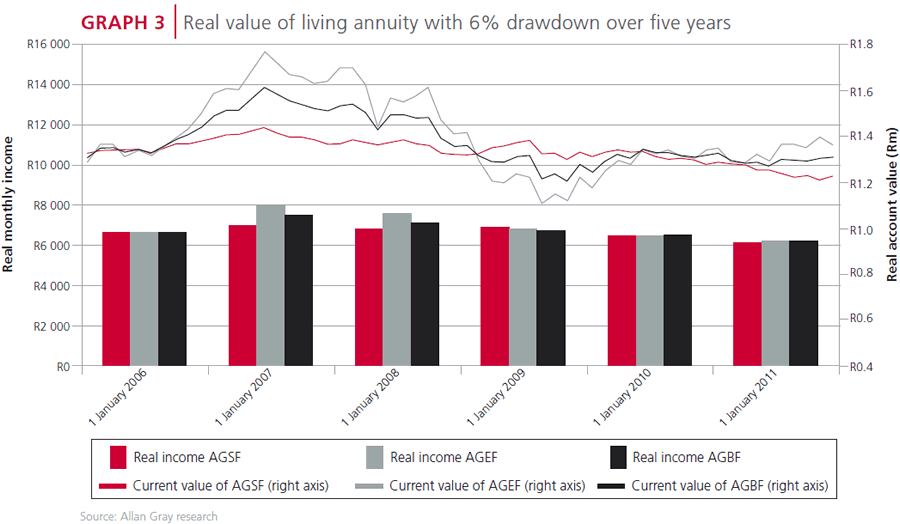Living annuities need to provide an income stream for life. This means that the asset allocation in your living annuity investment should be aimed both at maintaining your income level and providing long-term growth. Richard Carter discusses some of the factors that you should consider when making your asset allocation decisions.
It is well known that intelligent diversification between different asset classes can have a significant impact on an investor's returns. Careful asset allocation is particularly important in a living annuity, because the decisions you make will influence how long your investment will last and what standard of living you will be able to afford. Investment decisions are complex and, if you don't have the time or the expertise to research the options yourself, you may wish to consult an independent financial adviser.


Where to start with asset allocation decisions
Getting the balance right on an ongoing basis is difficult. Before you begin, you should consider how much growth you need to sustain your investment and how much risk you can afford to take.
Based on this you should:
1.Look for assets that offer long-term growth potential.
2.Allocate capital to these assets based on your risk appetite and ability to handle decreases in income.
1. Look for assets that offer long-term growth potential
A key step in the investment planning process is to decide which asset classes currently offer value for money. Try not to make the mistake of investing in assets based on recent outperformance.
Graph 1 shows the long-term historic returns of equities and cash in South Africa. Each point represents the average performance over the previous 10 years. Investors looking at the 10-year performance up to either of the points indicated by the arrows, may have chosen to allocate a higher proportion of their investment to fixed interest rather than equities. These investors would then have missed out on the next 10 years of growth. The graph illustrates that past performance is a misleading indicator of future performance. Instead of looking at past performance, you should base your initial asset allocation on whether or not the asset is undervalued and likely to increase in value over the long term.
Graph 1 also shows that over the past 50 years equities have outperformed cash in 83% of the 10-year periods shown, making them the traditional asset choice for providing investment growth. However, domestic equities have just had a great 10-year run and we do not believe that they are currently undervalued. It is unlikely that this level of outperformance will be repeated in the next 10 years.
2. Allocate capital to assets based on your risk appetite and ability to handle decreases in income
Asset classes with the potential for greater returns come at the expense of increased risk of capital loss as well as increased short-term volatility. Therefore, if you want to enjoy the benefit of greater lifetime income, you must be prepared to tolerate both these risks. In a living annuity your ability to handle volatility is especially important as it affects both your investment growth and the income you receive. Specifically, you should be able to restrict your income if growth disappoints and is low or negative.
There are many unit trusts available that allow you to hand over your asset allocation decisions to the investment manager. These are called asset allocation or solution funds. Even if you invest in these funds, it is important to ensure that the fund you choose matches your risk appetite.
Investors who are able to stomach some risk and can remain disciplined throughout the investment may benefit from a balanced asset allocation, such as the Allan Gray Balanced Fund. This Fund has a diversified portfolio with exposure to a mix of assets with potential for growth and capital stability. Investors who are more conservative and unable to tolerate lower income during down times may find that an investment with more focus on capital stability is more suitable, such as the Allan Gray Stable Fund.

How does volatility impact on your investment?
Graph 2 compares an investment in the Allan Gray Equity Fund (AGEF), Balanced Fund (AGBF) and Stable Fund (AGSF). The bars show the real monthly income drawn from each investment, every year for the past 10 years, as well as the income that would be drawn for the current year. The line graphs show the value held in the investment account over the period expressed in today's prices. As one would expect, due to the outperformance of equities over the last 10 years, the Equity Fund clearly outperformed the Balanced and Stable funds in terms of both increased capital growth and greater income.
If you consider Graph 2, you could conclude that a living annuity should be 100% invested into equities instead of into an asset allocation fund. Not only would you be banking on equities outperforming in the future, as they have over the past 10 years, you would also run an increased risk of capital loss and increased short-term volatility. This is demonstrated in Graph 3. Three living annuity investments are shown over a shorter five-year term, in which the Equity Fund experienced a sharp drop in value of about 37% from 2007 to 2009. Over the five years, the three investments produced similar real monthly income levels and final capital values, although this is due to the very strong recovery in the Equity Fund over the last two years. Looking at the situation in early 2009, the investment in the Equity Fund was 16% below the Stable Fund, and many investors jumped ship, locking in the drop in value of the previous two years.
The investments illustrated in Graphs 2 and 3 assume a constant income level of 6% drawn throughout the investment. While the percentage income remained the same, in the volatile equity investment, the rand amount the investor withdrew would have changed depending on the performance of the Fund. During up times, the investor would have enjoyed increased income in rand terms, while in the down times income would have been lower.
To cope with this volatility, instead of drawing an income set at a constant percentage, you should consider setting your income in rands and then increasing it yearly with inflation. Returns not withdrawn during the up times help to cope with periods of low or negative returns. During periods of negative growth, you may need to decrease the amount withdrawn to protect capital, as drawing too high an income can erode capital quickly.
Asset allocation decisions should always be based on value and be influenced by your ability to stomach risk. The two common pitfalls of choosing asset classes based on recent past performance, and ignoring the effects of volatility, could mean that your living annuity runs out too soon.